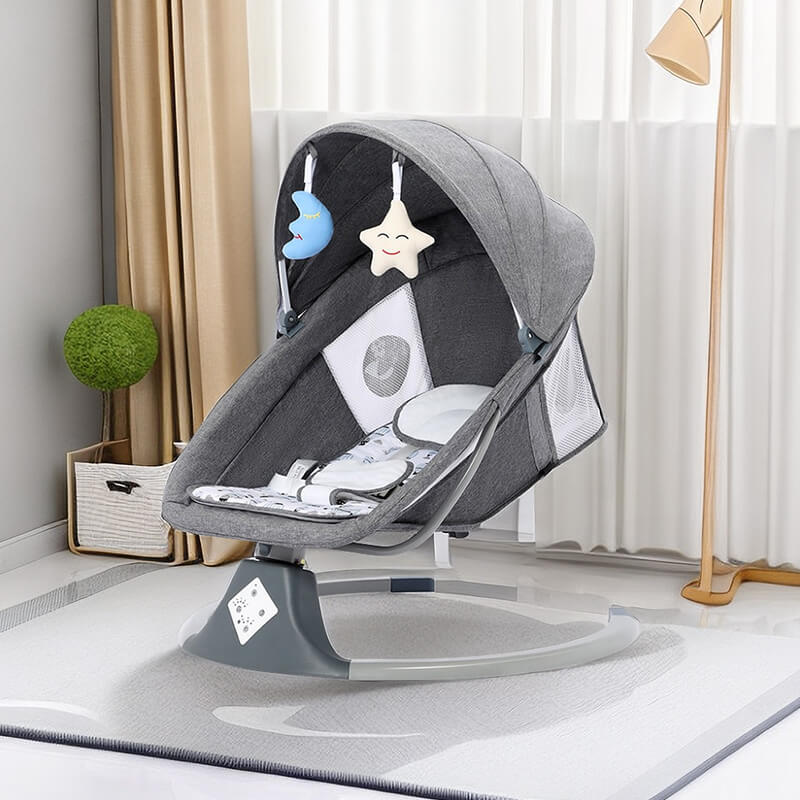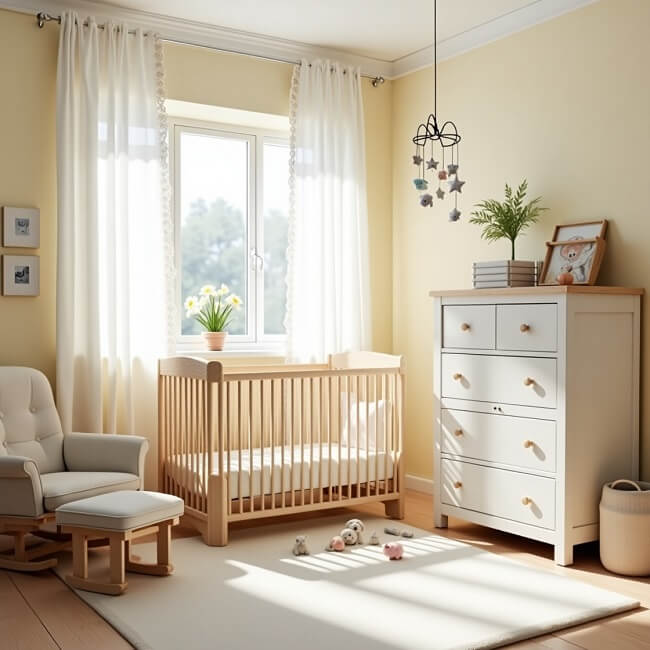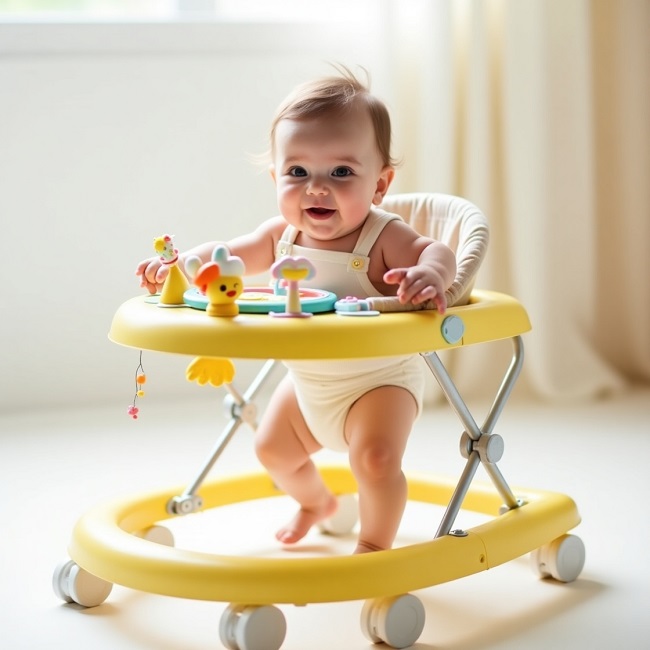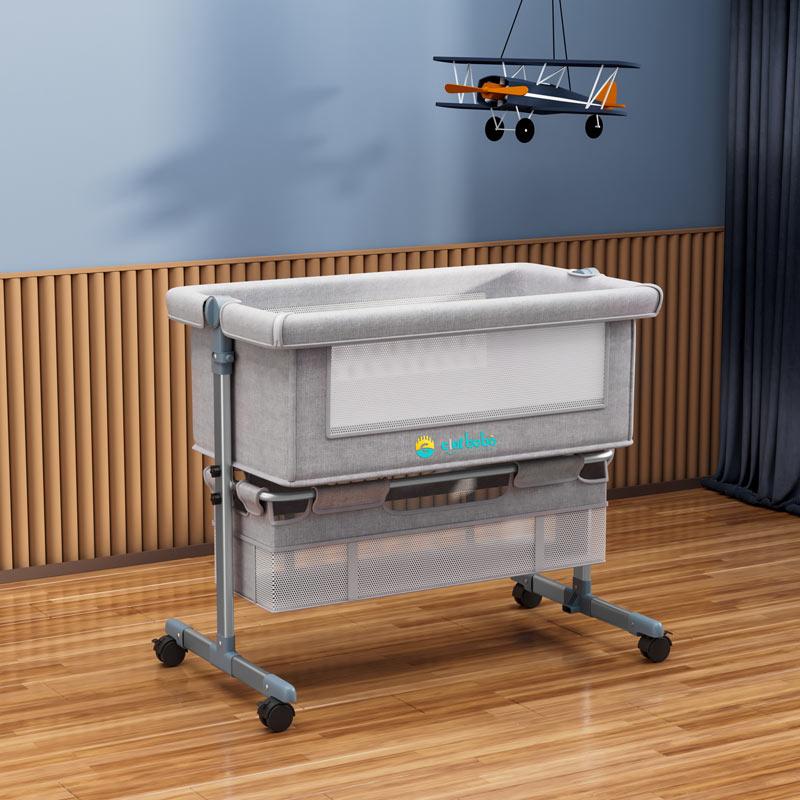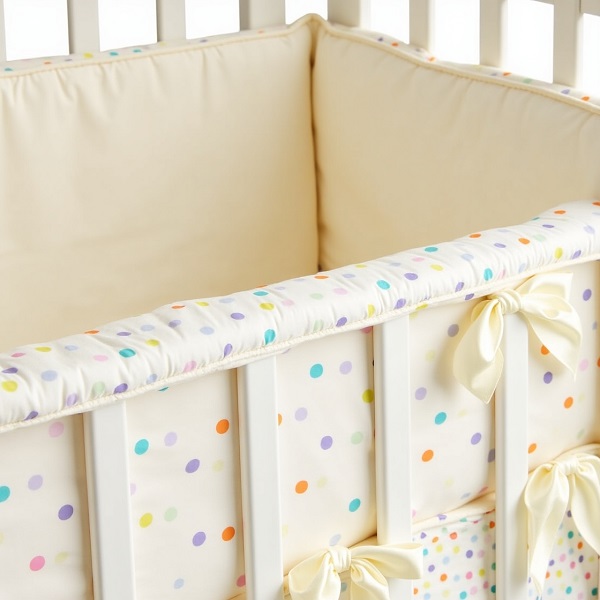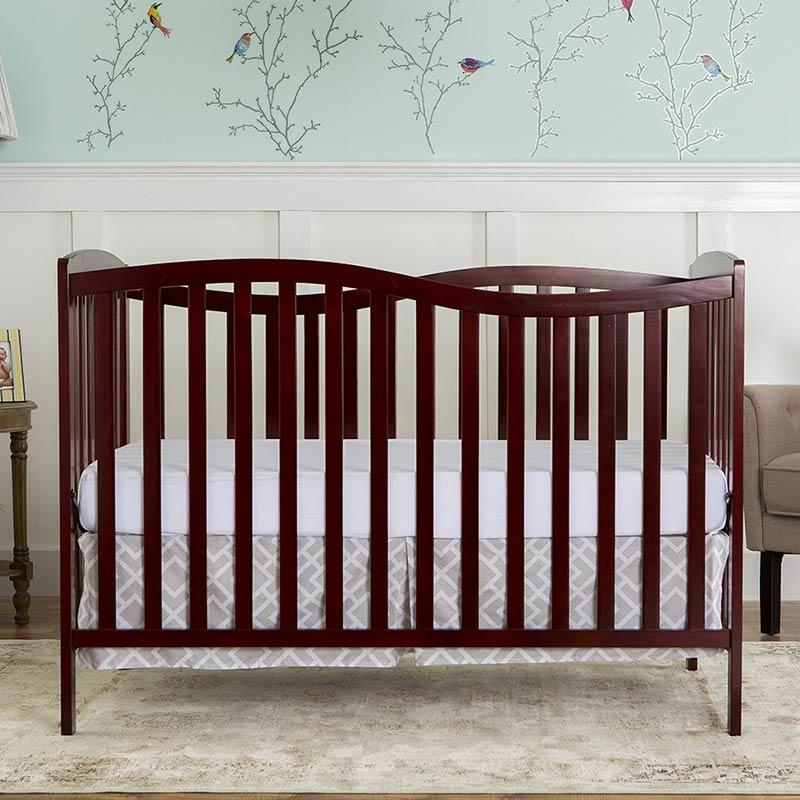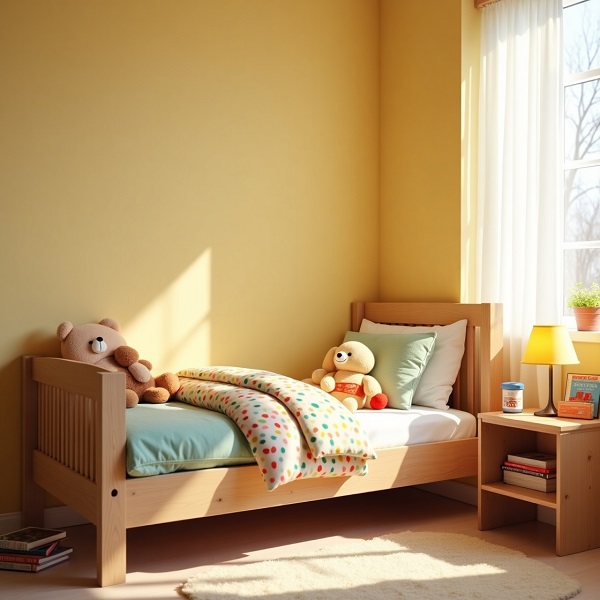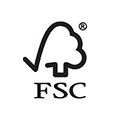Élever un nouveau-né s'accompagne de son lot de questions et d'inquiétudes, notamment en ce qui concerne les produits conçus pour aider son développement et lui apporter du confort. Parmi ces produits, les transats pour bébé sont devenus un incontournable dans de nombreux foyers. Ce guide vise à approfondir les différents aspects des transats pour bébé afin de s'assurer que les parents et les tuteurs sont bien informés pour l'année à venir, 2025.
Les transats sont-ils sûrs pour les nouveau-nés ?
Il est essentiel de comprendre que la sécurité d’un transat pour bébé dépend en grande partie de deux facteurs principaux : la conception du transat et la manière dont il est utilisé par la personne qui s’occupe de lui.
Fabricants de transats pour bébé Ces produits doivent être conçus en tenant compte de la morphologie délicate du bébé, en intégrant des caractéristiques qui garantissent stabilité, confort et sécurité. Vous devez choisir un transat spécialement conçu pour les nouveau-nés et suivre strictement les instructions du fabricant. Les transats pour bébé peuvent être sans danger pour les nouveau-nés lorsqu'ils sont utilisés correctement et sous surveillance.
Il est également important de noter que même si les transats peuvent être un outil utile pour calmer et divertir un bébé, ils ne sont pas conçus pour des périodes de sommeil prolongées. L'Académie américaine de pédiatrie recommande que pour dormir, les bébés soient placés sur le dos sur une surface ferme et plate dans un berceau ou berceauCela vise à minimiser le risque de syndrome de mort subite du nourrisson (SMSN) et à garantir un environnement de sommeil sûr.
Quels sont les avantages d’un transat pour bébé ?
Les transats pour bébé offrent plusieurs avantages tant pour les bébés que pour les parents :
1. Apaisant et calmant : Tout d’abord, le mouvement de rebondissement doux peut être incroyablement apaisant pour les nourrissons et peut aider à apaiser et calmer un bébé agité ou souffrant de coliques. Le mouvement rythmique imite la sensation d’être bercé ou tenu, ce que de nombreux bébés trouvent réconfortant et contribue même à améliorer leurs habitudes de sommeil.
2. Du temps libre pour les parents : Un fauteuil à bascule pour bébé offre un endroit sûr et sécurisé où votre bébé peut se reposer pendant que vous vous occupez d'autres tâches ménagères. Ce temps libre peut être précieux pour les parents qui s'occupent des tâches ménagères, préparent les repas ou prennent simplement un moment pour se détendre.
3. Favorise le développement : Certains transats pour bébé sont équipés de barres de jeu ou de mobiles. Ces éléments permettent non seulement de divertir le bébé, mais aussi de stimuler ses sens visuel et auditif, favorisant ainsi son développement précoce. Le fait de tendre la main et de saisir les jouets peut améliorer les capacités motrices, tandis que les textures colorées et variées des jouets peuvent favoriser le développement cognitif.
4. Favorise une meilleure digestion : Les transats sont conçus pour soutenir les bébés dans une position semi-verticale, ce qui peut être bénéfique pour les tout-petits souffrant de reflux. Cette position permet de minimiser l'inconfort causé par le reflux acide, ce qui permet au bébé de digérer plus facilement son lait ou sa préparation. Certains parents trouvent que leurs bébés font la sieste confortablement dans un transat pour bébé, surtout s'ils souffrent de reflux ou préfèrent dormir dans une position légèrement surélevée. Cependant, faites passer votre bébé sur une surface plane et ferme pour dormir une fois qu'il est endormi et surveillé.
5. Portabilité : De nombreux transats pour bébé sont légers et portables, ce qui les rend faciles à déplacer d'une pièce à l'autre ou à emporter avec vous en voyage. Cette polyvalence vous permet de garder votre bébé à proximité tout en ayant la flexibilité nécessaire pour vaquer à vos activités quotidiennes.
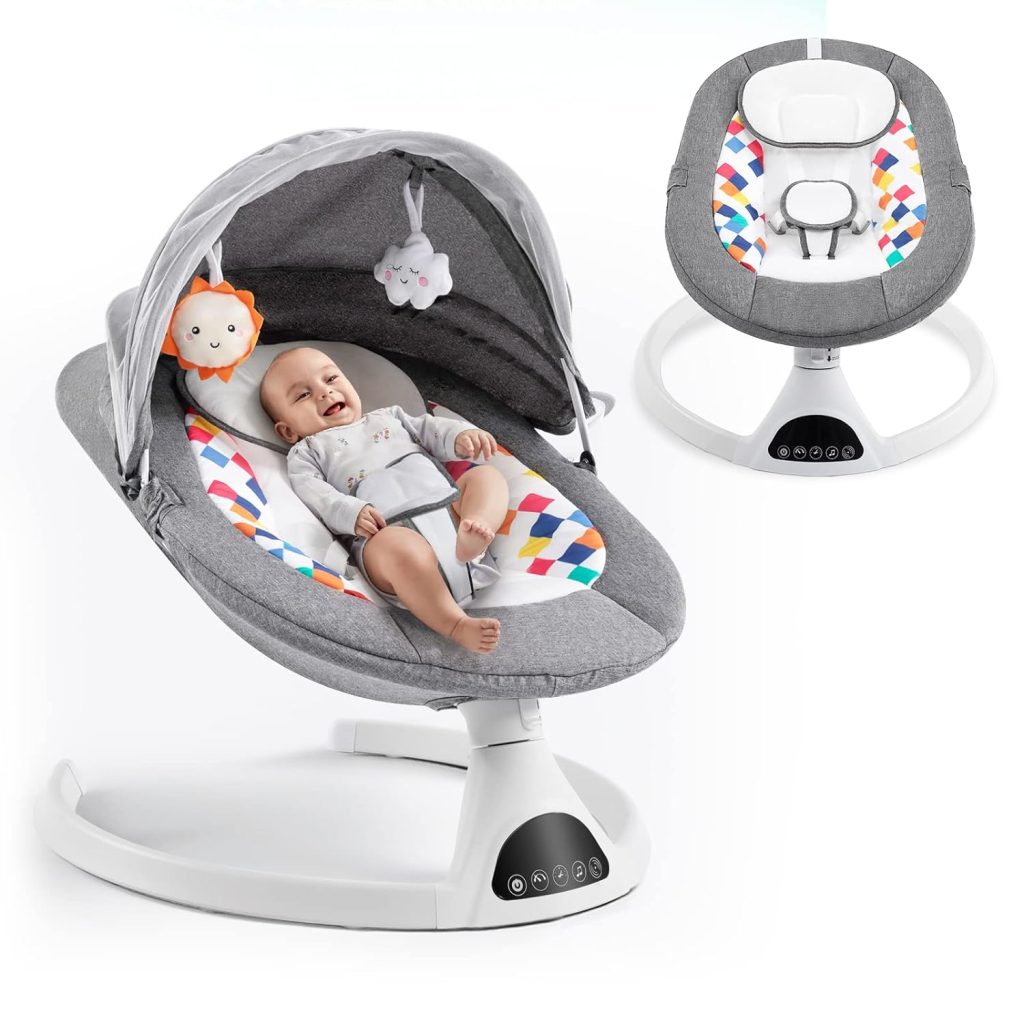
À quelle tranche d'âge le transat est-il adapté ?
Les transats pour bébé sont généralement adaptés aux nouveau-nés et peuvent être utilisés jusqu'à ce que le bébé atteigne une certaine limite de poids ou une étape de développement, comme commencer à s'asseoir sans aide. En général, les transats pour bébé conviennent aux nourrissons de la naissance à environ six mois ou jusqu'à ce qu'ils puissent s'asseoir sans aide. Cependant, il existe différents types de transats pour bébé conçus pour s'adapter à différentes tranches d'âge :
1. Transats pour nouveau-nés
Certains transats pour bébé sont spécialement conçus pour les nouveau-nés et offrent un soutien adéquat à leur cou et à leur tête fragiles. Ces transats sont souvent dotés de positions inclinées et de systèmes de harnais sécurisés pour assurer la sécurité et le confort des nouveau-nés.
2. Transats pour bébé
À mesure que les bébés grandissent et acquièrent un meilleur contrôle de la tête et du cou, ils peuvent passer à des transats pour bébés avec des positions légèrement plus verticales. Ces transats peuvent avoir des réglages d'inclinaison réglables pour s'adapter aux bébés au fur et à mesure de leur développement.
3. Transats pour tout-petits
Certains transats sont conçus pour grandir avec votre bébé et peuvent être utilisés dès le plus jeune âge. Ces transats sont généralement dotés de fonctions réglables et de limites de poids plus élevées pour s'adapter aux bébés plus âgés et plus actifs.
Il est important de reconnaître que même si les transats peuvent être utilisés dès la naissance, ils doivent être utilisés avec une prudence accrue au cours des premières semaines. Les nouveau-nés ont une force cervicale limitée et, par conséquent, la position d'inclinaison du transat doit être ajustée en conséquence, en veillant à ce que la tête et le cou du bébé soient correctement soutenus. Au fur et à mesure que le bébé grandit et acquiert plus de contrôle sur les mouvements de son cou et de sa tête, la position du transat peut être ajustée en conséquence.
Il faut envisager de ne plus utiliser le transat dès que le bébé montre des signes de capacité à s'asseoir de manière autonome ou s'il a atteint la limite de poids maximale spécifiée par le fabricant. À mesure que les bébés se développent, ils peuvent devenir trop mobiles pour les limites d'un transat, et il est essentiel de les faire passer à des options de jeu et d'assise plus adaptées. Continuer à utiliser le transat au-delà de ce point peut présenter des risques pour la sécurité, notamment le risque de chute ou de sensation de contrainte pour le bébé.
Combien de temps mon bébé peut-il rester dans un transat ?
Les experts en pédiatrie recommandent généralement de ne pas laisser les bébés dans un transat pendant plus de 20 à 30 minutes d'affilée. Mais la durée exacte nécessaire dépend de l'âge, du développement et du niveau de confort de votre bébé.
Pour les fauteuils à bascule pour nouveau-nés, il est recommandé de limiter le temps d'utilisation à de courts intervalles, généralement de 15 à 20 minutes à la fois. Les nouveau-nés ont un cou délicat et peuvent ne pas avoir la force musculaire nécessaire pour soutenir leur tête pendant de longues périodes. De plus, des périodes prolongées dans un transat peuvent augmenter le risque de développer une zone plate à l'arrière de la tête du bébé.
À mesure que les bébés grandissent et maîtrisent mieux leur tête et leur cou, ils peuvent passer des périodes légèrement plus longues dans un transat. Essayez de limiter les séances de transat à environ 30 minutes à une heure à la fois et faites des pauses pour permettre à votre bébé de bouger et de s'étirer.
Une fois que votre bébé devient plus actif et mobile, il peut être moins intéressé à passer du temps dans un transat. Il est essentiel de suivre les signaux de votre bébé et de ne pas le forcer à rester dans le transat s'il semble mal à l'aise ou agité. À ce stade, vous pouvez encourager un jeu plus actif et une exploration dans un environnement sûr.
Passer trop de temps dans un transat peut limiter les possibilités de développement physique du bébé, comme le temps passé sur le ventre, essentiel pour renforcer le cou, les épaules et les bras. Le temps passé sur le ventre favorise également la motricité et aide à prévenir l'aplatissement de l'arrière de la tête du bébé, appelé plagiocéphalie positionnelle.
Il est également bénéfique pour les bébés d’avoir une variété d’expériences sensorielles tout au long de la journée, y compris l’interaction avec les personnes qui s’occupent d’eux, qui peut être limitée si un bébé passe trop de temps dans une chaise à bascule.
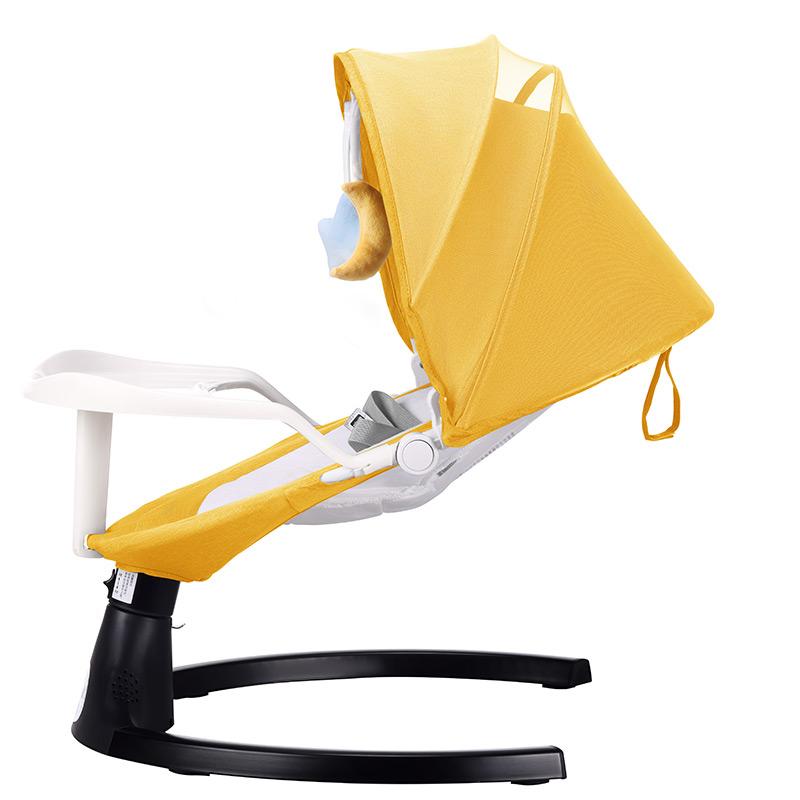
Comment utiliser un transat pour bébé ?
Pour utiliser un transat de manière sûre et efficace, il ne suffit pas de placer le bébé dans le siège. Il est tout d'abord impératif de lire et de comprendre attentivement les instructions du fabricant avant utilisation. Cela comprend les instructions de montage, les directives relatives au poids et à l'âge, ainsi que les précautions de sécurité.
Lorsque vous installez le bébé dans le transat, assurez-vous que le harnais est bien ajusté et sécurisé pour éviter que le bébé ne glisse. Le dos du bébé doit être soutenu par le siège du transat, ses pieds pouvant toucher la base ou bouger librement sans restriction. Cette position permet au bébé de bénéficier du mouvement de rebond sans risque de blessure.
Il est également conseillé d'utiliser le transat au sol plutôt que sur des surfaces surélevées comme des tables ou des comptoirs, même si le bébé est solidement attaché. Cela minimise le risque de chute causée par le basculement du transat ou par les mouvements du bébé qui modifient la position du transat. De plus, il est essentiel de garder le transat à l'écart des dangers tels que les cordons, les radiateurs ou les objets tranchants pour garantir que l'environnement du bébé soit aussi sûr que possible.
Comment nettoyer un transat pour bébé ?
En suivant ces étapes, vous pouvez nettoyer efficacement votre transat pour bébé afin de le garder frais, hygiénique et sûr pour votre tout-petit. Un nettoyage régulier contribuera à prolonger la durée de vie du transat et à offrir un environnement propre et confortable à votre bébé.
1. Vérifiez les pièces amovibles : De nombreux transats pour bébé sont dotés de housses en tissu amovibles, de coussins de siège ou de harnais qui peuvent être facilement nettoyés. Retirez ces pièces conformément aux instructions du fabricant.
2. Pièces lavables en machine : Si les housses en tissu, les coussins de siège ou les sangles du harnais sont lavables en machine, utilisez un cycle délicat et un détergent doux, et évitez d'utiliser de l'eau de Javel ou des produits chimiques agressifs.
3. Pièces lavables à la main : Si des pièces du transat doivent être lavées à la main, remplissez un évier ou une bassine d'eau tiède et de détergent doux. Frottez doucement les housses en tissu ou les autres pièces avec une brosse ou un chiffon doux, puis rincez abondamment à l'eau claire.
4. Essuyez le cadre : Utilisez un chiffon ou une éponge humide pour essuyer le cadre et toutes les pièces en plastique ou en métal non amovibles du transat. Portez une attention particulière aux zones où la saleté, les miettes ou les déversements peuvent s'accumuler.
5. Désinfectez si nécessaire : Si votre bébé a été malade ou si le transat a été très sali, vous pouvez le désinfecter en utilisant des méthodes telles que le nettoyage à la vapeur ou l'essuyage avec une solution d'eau et de désinfectant doux.
6. Séchez soigneusement à l'air libre : Laissez sécher complètement toutes les pièces du transat avant de les remonter ou de les réutiliser. Suspendez les housses en tissu ou les coussins de siège pour les faire sécher ou posez-les à plat sur une surface propre. Évitez de remonter le transat alors que des pièces sont encore humides.
Comment choisir un transat pour bébé ?
La première chose à prendre en compte est la sécurité, comme un cadre robuste, un système de harnais sécurisé et le respect des normes de sécurité. La vérification des rappels de produits et la lecture des avis peuvent également donner un aperçu de la sécurité et de la fiabilité d'un transat.
Le confort est un autre aspect essentiel, avec des caractéristiques telles que des positions d'inclinaison réglables, un tissu doux et une conception ergonomique qui contribuent au confort et au soutien général du bébé. De plus, la facilité de nettoyage, avec des housses amovibles et lavables, peut simplifier l'entretien pour les soignants.
Les parents et les tuteurs peuvent également vouloir prendre en compte les fonctionnalités supplémentaires du transat, telles que les réglages de vibration, la musique et les barres de jouets, qui peuvent améliorer le plaisir et les avantages pour le développement du bébé.
La portabilité et le stockage sont également des éléments importants à prendre en compte, en particulier pour les familles disposant d'un espace limité ou celles qui voyagent fréquemment. Une conception légère, compacte et pliable peut rendre le transat plus pratique à utiliser et à ranger lorsqu'il n'est pas utilisé.
Conseils pour utiliser le transat pour bébé en toute sécurité
1. Surveillez votre bébé : Ne laissez jamais votre bébé sans surveillance lorsqu'il est dans le transat, même pour une courte période. Assurez la sécurité et le confort de votre bébé en le surveillant de près à tout moment.
2. Utilisez le harnais de sécurité : Utilisez toujours le harnais de sécurité fourni pour attacher votre bébé dans le transat, même s'il est très jeune. Assurez-vous que le harnais est correctement ajusté et bien ajusté, mais pas trop serré.
3. Placer sur une surface stable : Placez toujours le transat sur une surface plane et stable, à l'écart de tout danger tel qu'un escalier, un cordon ou un bord tranchant. Évitez de placer le transat sur des surfaces surélevées comme une table ou un plan de travail.
4. Évitez la surutilisation : Limitez le temps que votre bébé passe dans le transat et proposez-lui différentes positions de jeu et de repos tout au long de la journée. Évitez d'utiliser le transat comme substitut à des moments de jeu sur le ventre ou à d'autres activités de développement.
5. Effectuez la transition avec précaution : À mesure que votre bébé grandit et se développe, préparez-vous à le faire sortir du transat et à l'installer dans d'autres sièges ou options de jeu. Soyez attentif aux signes indiquant que votre bébé devient trop mobile ou agité pour les limites du transat.
Conclusion
Les transats pour bébé peuvent être un ajout précieux à l'arsenal de soins pour bébé d'une famille, offrant des avantages à la fois pour le bébé et pour les personnes qui s'en occupent. Cependant, leur utilisation sûre et efficace nécessite une attention particulière aux besoins du bébé, le respect des consignes de sécurité et un entretien régulier. En choisissant le bon transat et en l'utilisant de manière responsable, les parents et les tuteurs peuvent offrir à leurs bébés un environnement sûr, confortable et engageant qui favorise leur développement et leur bien-être.
Armés d’informations complètes et de pratiques conscientes, les soignants peuvent naviguer dans ces choix en toute confiance, garantissant que leurs enfants reçoivent les meilleurs soins possibles à mesure qu’ils grandissent et s’épanouissent en 2025 et au-delà.
Articles connexes recommandés :

